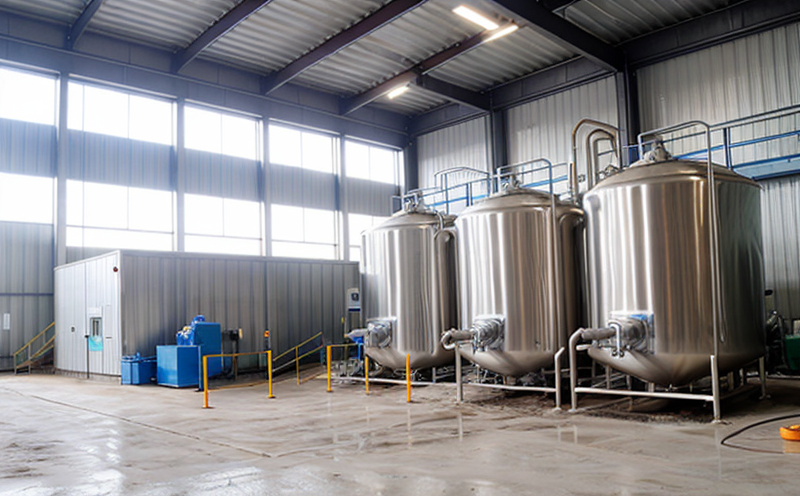ISO 10304-1 Anions Determination Test in Process Water
The ISO 10304 series of standards is designed to provide methods for the determination of anions present in water and wastewater. This particular method, ISO 10304-1, focuses on the quantitative analysis of anions in industrial process waters. The importance of this test cannot be overstated as it directly impacts the quality control processes within various industries such as power generation, chemical manufacturing, and pharmaceuticals.
Industrial process water is a critical resource for many sectors. Its quality can significantly influence product yield, equipment longevity, and environmental impact. By ensuring that anions are accurately measured, organizations can maintain optimal operating conditions, reduce operational costs, and comply with regulatory standards.
The ISO 10304-1 method employs ion chromatography as a primary analytical technique due to its high sensitivity and selectivity for anionic species in complex matrices. This approach allows laboratories to achieve precise results even when dealing with trace levels of contaminants. The process involves several key steps including sample preparation, instrumental analysis, calibration, and data interpretation.
Sample Preparation: Before undergoing chromatographic analysis, samples must undergo appropriate dilution or concentration depending on their initial concentrations. Proper filtration is also necessary to remove particulate matter which could interfere with the detection process. Accurate weighing of the sample ensures consistency across multiple tests and facilitates reproducibility.
Instrumental Analysis: Ion chromatography uses an eluent stream composed primarily of a mobile phase that carries the analytes through the column where they interact with stationary phases causing separation based on differences in affinity. Detection occurs via conductivity measurement which provides direct information about ionic strength allowing quantification of specific ions.
Data Interpretation: Results from the chromatogram are analyzed using software capable of integrating peaks corresponding to each detected anion type according to their retention times and areas under curves representing concentrations. These values are then compared against reference standards or previously established limits set by industry guidelines such as those provided by ASTM D7021-18.
| Step | Description |
|---|---|
| Dilution/Concentration | Adjust sample volume to ensure accurate measurement. |
| Filtration | Remove particulate matter using a membrane filter with appropriate pore size. |
| Weighing | Precisely measure sample mass to maintain consistency. |
Scope and Methodology
The scope of the ISO 10304-1 standard encompasses the determination of anions in industrial process waters by ion chromatography. This includes not only the identification but also quantification of various types of anions based on their unique properties and potential effects on processes.
Methodology involves several stages starting from initial sampling through final reporting. Each step follows strict protocols outlined within the standard to ensure reliability and accuracy. These include guidelines for collecting representative samples, handling them correctly during transport, preparing them appropriately before analysis, performing actual chromatographic separations, interpreting resulting data accurately, and documenting findings thoroughly.
For effective implementation of this method, specialized equipment is required including ion chromatographs equipped with appropriate columns tailored to specific anion detection requirements. Additionally, calibration solutions containing known concentrations of each targeted analyte are essential for establishing accurate reference points during the analysis process.
Customer Impact and Satisfaction
Implementing ISO 10304-1 testing provides significant benefits to customers operating within industries reliant on high-quality industrial process water. By adhering to this standard, companies demonstrate their commitment to maintaining superior product quality, enhancing operational efficiency, minimizing waste generation, and safeguarding public health.
Regular monitoring of anions in process waters helps prevent potential issues such as scaling or corrosion which can lead to costly repairs or replacements of equipment. It also supports efforts towards sustainable practices by optimizing resource usage while reducing environmental footprints. Satisfied customers appreciate our ability to deliver reliable, precise results that align with international standards and industry best practices.
Competitive Advantage and Market Impact
- Ensures compliance with stringent regulatory requirements across different regions.
- Promotes transparent communication between stakeholders regarding product safety and performance metrics.
- Fosters trust among consumers who value environmental responsibility above all else.
- Aids in identifying areas for improvement within existing operations leading to continuous enhancement of service offerings.





